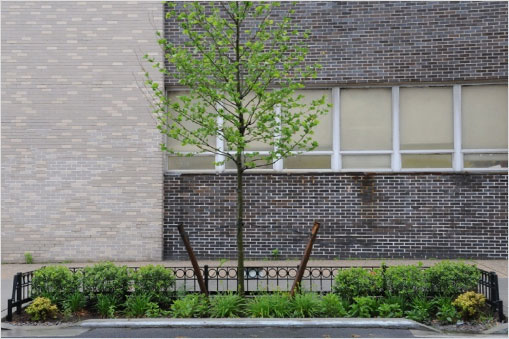 June 14, 2013 CONTACT: Chris Gilbride / Ted Timbers (718) 595-6600 Department of Environmental Protection Seeks Engineering Team to Assist in Green Infrastructure Research and Development ProgramSelected Team Will Provide Scientific Expertise to Advance New York City’s Nationally Recognized Green Infrastructure ProgramThe New York City Department of Environmental Protection (DEP) today issued a Request for Proposals for engineering teams to assist the department in its Green Infrastructure Research and Development Program. In order to improve the cleanliness and health of New York City’s waterways, DEP has embarked on an aggressive campaign to install cost-effective green infrastructure installations throughout the city to manage stormwater that falls on city streets, roofs, and sidewalks. DEP is planning for $2.4 billion in public and private funding for green infrastructure installations by 2030 to significantly reduce the discharges from the City’s combined sewer system which can occur during heavy rain storms. Preliminary monitoring results to date show that pilot installations are meeting or exceeding expectations for absorbing stormwater. Over the next three years, DEP will invest over $187 million in the green infrastructure program and a robust research and development effort is necessary to ensure the success of the program. DEP expects to select an experienced team that is familiar with the New York City green infrastructure program, or a comparable municipality’s program, and can work with DEP to implement an innovative and effective green infrastructure research and development effort for several years. Find the full Request for Proposals in today’s City Record here. Through a 2012 agreement with the New York State Department of Environmental Conservation, DEP committed to an innovative approach to meet water quality standards that will include green infrastructure projects, along with cost-effective grey strategies, that is projected to manage the first inch of rain that falls on 10 percent of the impervious areas in combined sewer areas by 2030. To meet water quality goals and remain cost-effective, DEP’s green infrastructure program must be technically feasible and reliable over the long-term. In support of these efforts, the selected team will be tasked with monitoring existing and new green infrastructure installations, assessing their performance over time, performing experiments, analyzing the data, and providing guidance to support the overall program. The objectives for this research and development project include but are not limited to:
In 2010, DEP began monitoring the city’s first green infrastructure installations, and continues to perform both site-scale and neighborhood-scale analyses of several types of green stormwater management systems. DEP recently published the 2012 Preliminary Pilot Monitoring Results for 25 constructed pilot installations which can be viewed here. Similarly, DEP is monitoring efforts in three different Neighborhood Demonstration Areas in order to quantify the cumulative performance of multiple green infrastructure installations in a defined drainage area. Examples of green infrastructure include: bioswales, stormwater green streets, rain gardens, blue roofs, sub-surface detention systems, green roofs, porous pavement, permeable pavers, and constructed wetlands. Since 2002, DEP has invested more than $10 billion in upgrades to wastewater treatment plants and related efforts to reduce combined sewer overflows and the cleanliness and health of New York City harbor water continues to improve to levels not seen in more than a century. However, combined sewer overflows remain the city’s major harbor water quality challenge. As further “grey” infrastructure upgrades became increasingly expensive and the additional increment of water quality improvements diminished per dollar invested, in 2010 DEP launched the Green Infrastructure Plan, an alternative approach to improving water quality that combines traditional infrastructure upgrades and the integration of green infrastructure to capture and retain stormwater runoff before it ever enters the sewer system. Over the next 20 years, DEP is planning for $2.4 billion in public and private funding for targeted green infrastructure installations, as well as $2.9 billion in cost-effective grey infrastructure upgrades, to significantly reduce combined sewer overflows. Thus far, DEP has installed 130 bioswales city-wide, hundreds more will be completed by the end of the year, and thousands will be added over the next five years. To view a video of a bioswale absorbing stormwater go here. DEP manages New York City’s water supply, providing more than one billion gallons of water each day to more than nine million residents, including eight million in New York City. The water is delivered from a watershed that extends more than 125 miles from the city, comprising 19 reservoirs and three controlled lakes. Approximately 7,000 miles of water mains, tunnels and aqueducts bring water to homes and businesses throughout the five boroughs, and 7,500 miles of sewer lines and 96 pump stations take wastewater to 14 in-city treatment plants. DEP has nearly 6,000 employees, including almost 1,000 in the upstate watershed. In addition, DEP has a robust capital program, with a planned $14.4 billion in investments over the next 10 years that will create up to 3,000 construction-related jobs per year. For more information, visit nyc.gov/dep, like us on Facebook at facebook.com/nycwater, or follow us on Twitter at twitter.com/nycwater. | ||